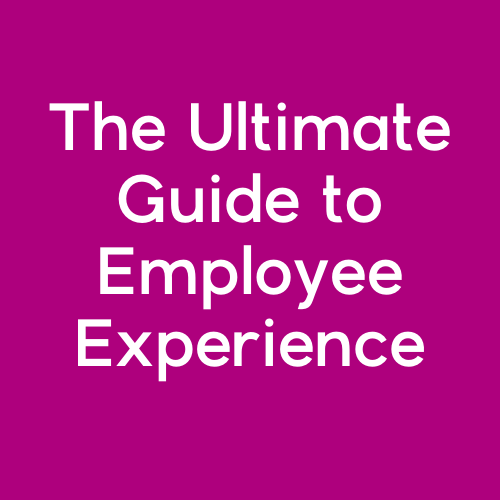From chaos to clarity
Systemize & scale by documenting what you do.
Does this sound like you?
It’s nice to
meet you.
How it works
1.
Download
We’ll ask you the questions we’ve learned to ask after working with 100s of small businesses. You’ll tell us what you do and how you do it.
2.
Distill
We’ll distill your company’s knowledge into clear, simple guidelines you can share, turning your secret sauce into repeatable actions.
3.
Document
We’ll make training easy to find and easy to use, so your whole team can access it whenever they need — at any time, from anywhere.
4.
Use & Update
You’ll train your team easier, build your business faster, and upgrade your quality of life — just by documenting what you do.
Our Clients
Book A Call
Frequently Asked Questions
-
Have you ever made a decision during a meeting, then 3 weeks later no one remembered what it was? They didn’t know where to find the files? They weren’t sure what the process was for a mission critical task?
When we say documentation, we mean just writing stuff down. Meeting agendas, checklists, operating procedures (how-tos,) templates, forms, workflows, and can’t-miss action items.
-
The SOP brain block is REAL and it happens to almost everybody who’s trying to document a skill or process — including yours truly!
Why is that? Because when something has become second-nature (like many of the things you do in your business,) you’re no longer holding each step in conscious memory. Those pieces of knowledge have settled down into the level of muscle memory and intuition. (Have you ever driven somewhere and wondered how you got there? It’s the same thing.)
This is why it’s actually easier to teach a skill you’ve just learned. You’re still running the checklist in your mind each time.
If your processes are ingrained, you’re probably going to need help teasing the steps back apart. It takes someone with fresh ears who can stop you mid-sentence and say, “Wait. Let’s back up. What triggered you to send that email to fulfillment? How did you know to call the vendor at that point? Who’s responsible for getting you the information for the re-order?”
The upside of mastering a skill is that you’re efficient (and awesome) at it. The downside is that it can be tough to remember all those split-second moves you’re making.
-
We use the term “playbook” very intentionally. A playbook conveys action. Operating manuals are for air conditioners. Playbooks are for businesses. A playbook will not include every single detail about your business. Why? Because that’s not useful. Especially if you’re growing, many of the details change monthly, weekly, or daily.
A business playbook is a place for your vital company information to live. It’s where the process component of your business and the people component of your business overlap. A playbook is what you use to share the following company knowledge with the people in your business.
Company (origin story, mission, vision, values)
Policies (rules of the workplace, cultural norms)
Processes (standard operating procedures)
People (who does what)
-
The answer is, “That depends.” Here are 3 guiding questions:
Who is it for?
Just like you have to identify your customers in order to communicate according to their needs, you’ll also want to know which type of employees you’re training. If you usually hire people who are new to their field, you’ll need lots of how-to’s and plenty of context…more detail. But if you’re typically bringing in subject matter experts who just need to know the particular ways you do things, you’ll want to go heavy on checklists…less detail.
What is the subject matter?
If you’re documenting something that is pretty black and white, like accounting or manufacturing, where consistency at scale is key, go heavier on the detail. The more information you can share, the better. That requires step-by-step SOPs.
But if you’re documenting something less black and white, where the person using your documentation will be making their own decisions like in a creative or expertise-based firm, lean into giving more guidelines and fewer detailed steps. Where too much detail could be limiting, teach people how to think, not necessarily how to do.
How much time will this save in the future?
If you have fifty employees, all executing repeatable processes, it’ll be well worth your time to get as much documented as you can. If you’re just beginning to delegate tasks to a small team, the ROI for your effort may not be so high.
Remember that SOPs are living things, and they can grow with you. It’s ok to start simple.
-
You can’t. We don’t get people to do anything; we build cultures where it’s easy and beneficial for them to do things a certain way.
Here are some tips for building a culture of accountability:
Training. Make sure your processes are accurately documented. Is all the information really there? And is it presented in a clear, engaging format, e.g. text, video, images, or a combination of the three?.
Tools. Remember that people can’t hold a thousand things in mind at once, and you certainly don’t want them having to refer back to the SOP every time they complete the task. So keep it simple with checklists, checklists, forms, — and the right technology to store it all.
Management. Finally, lean into coaching and strong change management. If someone isn’t performing at the level they should be…what happens?
Ready for more on the subject of inspiring employees to buy-in to using your SOPs? Try this article.
-
In short, you should document any process in your business that has been:
Decided. You’ve discovered the best way to execute something, and you’ve committed to doing it that way every time until a better way reveals itself)
Defined. You’re able to identify the specific, repeatable steps involved in executing that process. (You might need help uncovering what those steps are—that’s normal.)
Still can’t decide where to start? Ask yourself this: What are the current problems in your business you believe trace back to process?
Before you invest time into defining and documenting what you do, make sure the documentation will serve a purpose.
The last thing you want is to create a beautiful operating manual that sits in a metaphorical drawer forever and ever. What are the problems you need to solve, and how big of a priority are they right now? Think realistically and the number of SOPs accordingly. Remember, you can add more later!
-
Yes.
Almost always, the best person to build your playbook is the one who knows the least about your business. Why? Because that person makes no assumptions about how things are done, and therefore is able to ask great questions that your new hires probably have, too. The process of asking those questions is what results in YOU getting your business out of your brain.
-
Designating an internal owner / champion. While we are guiding you through the playbook-building process, and taking on much of the heavy lifting and project management, this is not work you are outsourcing—instead, it is highly collaborative. Designating one person inside your organization to “own” this project has a huge impact on its ultimate success.








































